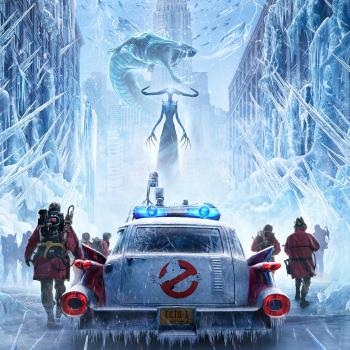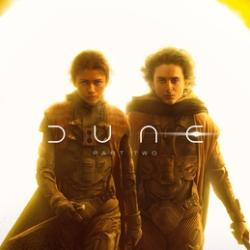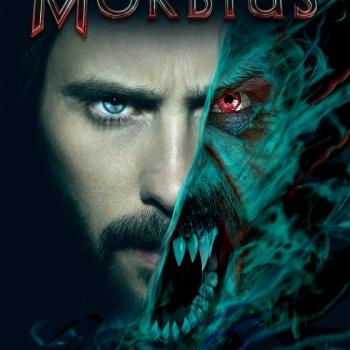Review of Cirque du Soleil, Directed by James Cameron
By COYLE NEAL
James Cameron’s Cirque du Soleil is a regular Pandora’s box of titanic proportions. It is a masterpiece of cinematic excellence and a film course all rolled into one. Merely watching this movie will teach you all about what makes a great film. As I walk through the plot (spoilers galore), I’ll share with you free of charge all the movie terms and definitions I picked up along the way.
Every great movie requires tension of some sort. This movie has it in bucket loads. Nay dump truck loads. The movie takes tension and runs straight at your face with it.
Tension: A bunch of people in zebratards splashing around in Skittles water.
Proper tension, as we all know, requires a good setting. The movie opens with a young girl (called “Jill” the only time she’s addressed, but according to the credits actually named “Mia”) wandering into the world’s least fun circus. Upon arrival, she’s immediately sexually harassed by the carnies and manhandled by the saddest clown I’ve ever seen. No doubt fearing for her life, she escapes into a nearby tent where the ringmaster announces the star attraction: the Aerialist. Who is awful at his job, because on the very first jump he misses his catch and falls to the floor. Mia is apparently the only one who cares, because she rushes into the ring to help him, only to find that the floor is made of quicksand and both are sucked into the world of the Cirque du Soleil. (Clearly, the other carnies knew enough to stay away from the ring.) And don’t worry that I’ve given the whole film away; that’s just the first three minutes.
Setting: A world that makes Willy Wonka’s mind look like a bastion of sanity.
On arrival in the world du Soleil, Mia meets her guide for the first stage of her journey. The Virgil to her Dante is apparently the love child of the Joker and a cornstalk, with slightly less intelligence and charisma. He guides her through the world with excruciating slowness as she searches for the Aerialist, before finally shoving her into a box and abandoning her. But wait! The box, like its previous quicksand counterpart, is actually yet another door into a deeper lever of Cirqueworld. This progression sets the all-important pacing for the movie.
Pacing: The exact amount of time it takes for a mime to light a hobo on fire in a world that would give Tim Burton nightmares.
Meanwhile, the Aerialist has been captured and chained up by a bunch of naked, tattooed, dancing Asian midgets. Who are also ninjas. (Or perhaps they’re simply ninjas because they are Asian, and James Cameron is just a huge racist? The film is unclear—unlike their fu manchus, which are all disturbingly clear.)
These ninjas are in charge of running on a giant hamster wheel that (I assume) powers the place. To be fair, I didn’t see the steam-punk twist coming, so well played there. Of course, you can’t leave your protagonist chained up for the whole movie, so he is rescued after a lengthy fight scene between the ninjas and a bunch of people wearing flying-puppet-armor.
Fight: A portion of the movie in which midgets run in circles screaming at each other with the lead character chained up in the background.
Weapon: Skillet full of rice with a flashbulb attached.
Finally, Mia and the Aerialist spot each other when they both stumble into a rave for the colorblind (I’m guessing, based on their clothes) featuring a DJ who owns The White Album, and only The White Album.
At this point, it has become clear that the two leads characters are champions of stoicism. My response to most horror movies is almost always: “Why don’t they just light the house/monster/serial killer on fire? Then if that doesn’t work, you can worry about coming up with a plan B.” If I had fallen into a world like this, that place would have been in flames. In flames. But as the ancient Greeks knew, “character is destiny,” and these two have shown that their character is up to the challenge life has thrown at them.
Character: The ability to maintain your calm no matter what insane, acid-induced world you find yourself in. Keep calm and carry on, indeed.
Alas, Mia and the Aerialist can’t quite fight their way through the crowd, and find themselves forced apart yet again. Mia finds herself lost in Hyrule, which then turns into human Plinko, which then becomes a cottage that turns into a bat (yes, the flying kind) made out of people. The Aerialist, on the other hand, finds himself caught up in a web of mystery and romance.
Mystery: A disembodied, possessed bunny head.
Romance: A woman writhing in the golden Princess Leia bikini on the moon.
In a sort of ‘Gulliver’s Adventures in the Wonderland of Rick Moranis’ backyard’ twist (the precise details are unclear), Mia and the Aerialist find themselves surrounded by giant grass and bugs. Once there, we find that they’re not so different after all—Mia is an aerialist too! (We’re not told if the Aerialist is also a Mia.) As the two swirl high above the ground in the grass, a giant flame shooting torch rises behind them as all the insane creatures they had encounters in their travels gather below them and… and… holy buckets, I think they went to hell! It all makes sense! The Aerialist fell off of the trapeze onto Mia and now they’re in hell! I wasn’t so far off with the Virgil-Dante comment after all! This movie is not just a random compilation of footage of Cirque du Soleil, it actually has a theme.
Theme: Life sucks and then you die.
This extra layer of thematic complexity adds a depth that raises this film from the merely weird to the outright meaningful, with much to say to our modern society about the hopelessness of human existence— life is nothing more than a combination of Dante, David Lynch, and Christo, and we’re all going to end up as hobos being lit on fire by mimes in the end anyway, so why not enjoy ourselves now?
To be serious for a minute (but only a minute), Cirque du Soleil just doesn’t work. I love the circus—in person. While I’ve never been to a live performance of Cirque du Soleil, I imagine that I would like it as well. But transferred over to the big screen, it loses the live aspect that makes a circus (or a Cirque) so unique, especially when compared to the other things that go on in movies. After all, I’ve seen Legolas kill an Oliphant, Spider-Man catch a helicopter between the Twin Towers, Riddick fight the Necromongers, and even a Puritan fighting the devil. A guy who can bend all the way backwards—as impressive as that physical feat is!—loses some of its luster by comparison. So go see Cirque du Soleil in person if you ever get the chance. But don’t go see it at a movie theater, especially when you have the options of going to see The Hobbit or Les Mis instead.
Dr. Coyle Neal lives in Washington, DC. He does not own a unitard.












